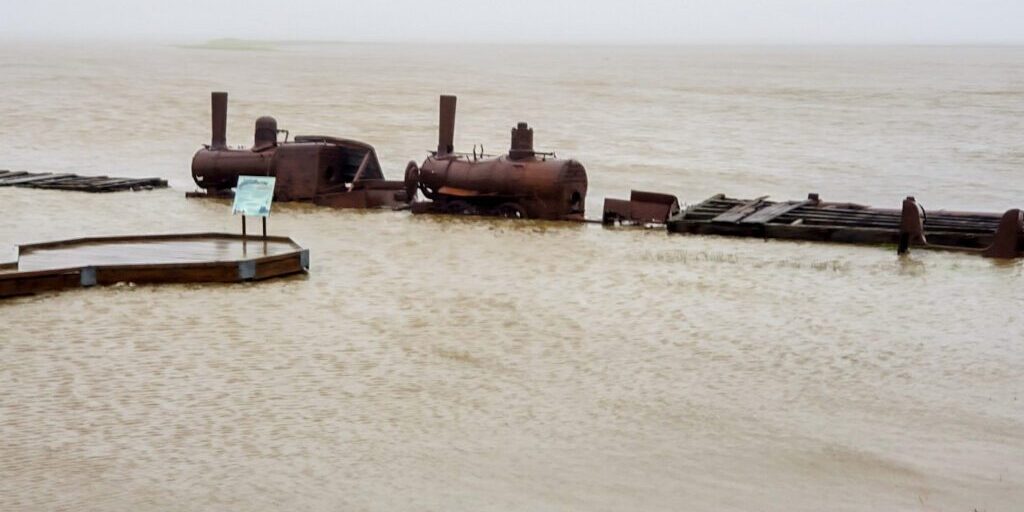Much of Western Alaska saw a respite from persistent rainfall yesterday, but not after receiving near record-breaking wet conditions in July. Over a three-day period last week, Nome recorded 3.29 inches of rain from July 26 – 28.
“Just eight-hundredths of an inch short of the record which still stands at 3.37 inches from July 31 to August 2, 2019.”
That’s Rick Thoman, climate specialist for the Alaska Center for Climate Assessment and Policy. Thoman explains how Western Alaska got stuck in a low-pressure system and what seemed like a non-stop rainy period.

“What we had [was] high pressure over Siberia, high pressure over Western Canada, and Eastern Alaska… Having a high pressure over Siberia and over Western Canada is not in itself unusual in the summer, but what was unusual is that was a very stable pattern. And in the way the atmosphere works, in between two high pressure systems is going to be a low pressure system, and Western Alaska was right where that low pressure system was.”
Due to these conditions and extra moisture from Asia which was carried over by warm air out of Siberia and elsewhere, July was an extremely wet month for the Bering Strait region, Bristol Bay, and northern communities all the way up to Utqiagvik.
For instance, Thoman says 6.14 inches fell at the Nome airport over the course of the month.
“That’s not a record, but it’s the most rain in July that probably everyone remembers because you have to go back to the 1920s to find a July with more rain than we had this year.”
Local residents may recall a similarly wet summer in 2019 when the “Last Train to Nowhere”, about 30 miles outside of Nome, was submerged by high water. That year, Nome broke a climate record for most rainfall in a 24-hour period.
Last week, Nome and parts of the region saw similar conditions, but the difference, Thoman says, is in 2019 there was one major rainstorm whereas this year there were repeated storms with more rain spread out over more days.
All of this summer rain caused water levels in some Nome rivers to rise six feet. According to Thoman, the Snake River rose six feet between July 26 and July 29, while the Niukluk River in Council rose at least 3.5 feet during the same time frame, flood advisories were issued by the National Weather Service, and subsistence fishing nets along with ADF&G fish counting projects had to be pulled from the rivers.

Thoman says it is unlikely Western Alaska will go through another sustained soggy period this month, but there is a possibility that Nome and parts of the region could see the wettest summer on record since the 1950s by the end of August.
Image at top: Nome-area historical curiosity the “Last Train to Nowhere,” surrounded by water during coastal flooding, August 2019. Photo courtesy of Lisa Leeper.




